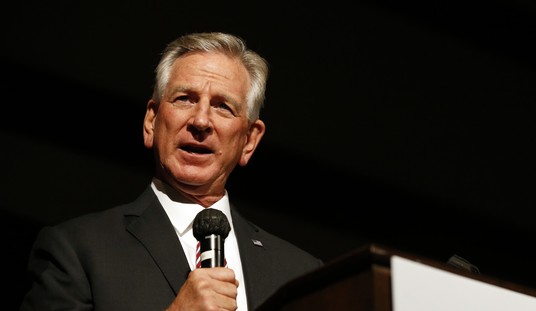Notwithstanding Disney’s animated box-office smash Bolt , about a talking white German shepherd who plays a K9 superhero in the movies and labors under the delusion that he possesses superpowers off-screen, not all successful dog movies are cute kid stuff. Bolt is a white German Shepherd who bears an uncanny resemblance to the actor supplying his voice, John Travolta; Bolt’s best friend is a little girl named Penny, voiced by Miley Cyrus. But in 1982, a very different white German Shepherd starred in a very different movie called White Dog.
One of the great Samuel Fuller’s last films, this celluloid examination of racism centers on a white German Shepherd trained to attack black people; the young actress who rescues the dog as a stray (she’s played by Kristy McNichol, seventies-era teen sweetheart and Miley Cyrus precursor); and the black trainer, played by the excellent Paul Winfield, who dedicates himself to re-programming the dog. The film’s very grown-up message is that racism is learned behavior — not unlike nuisance barking — that can be unlearned.
Long viewed as a cinematic bête noire — Paramount was so nervous about White Dog that it played in theaters for just one week, then was later unspooled at New York City’s prestigious Film Forum in 1991 — this controversial, misunderstood film boasts quite the cinematic pedigree, with a screenplay co-written by Curtis Hanson (based on a story by Romain Gary ) and soundtrack by Ennio Morricone. At long last, White Dog has just been given its scholarly due by the Criterion Collection, which lovingly restored the uncut version and released it on DVD complete with a heaping helping of irresistible cookies, including interviews with Hanson, dog trainer Karl Lewis-Miller (who also wrangled the animals in Cujo, Beethoven, and Babe), and the film’s canine star, who’s interviewed by Fuller himself.
As the impressive staying power of White Dog proves, movies with K9 protagonists can be very serious indeed, rated for adult eyes only — but only if the dogs vocalize naturally, unassisted by CGI wizardry. Dogs don’t have to talk to get noticed; they are silent actors of the first order, natural-born A-list talents. As Gloria Swanson’s Norma Desmond opined in Sunset Boulevard, defending the supremacy of her silent-actor peers over the talking ones that drowned them out, “We didn’t need voices — we had faces.” She might as well have been talking about K9 actors: Dogs’ faces are plenty expressive onscreen without the enhancement of celebrity human voices.
Ample proof of canine star quality may be seen in director Kelly Reichardt’s second feature film, Wendy and Lucy, premiering today (December 10) at Film Forum. Based on the short story Train Choir by Jon Raymond, this just might be the most realistic, powerful, girl-and-her dog tale ever filmed (move over, The Courage of Lassie ). Wendy and Lucy is a timeless treatment of homelessness that could melt a heart of stone, because it examines the phenomenon from a dog’s-eye view.
Michelle Williams stars as unemployed Wendy Carroll, who decides to drive with her dog Lucy from Indiana to Alaska in search of work at a fish cannery. Passing through Oregon, however, Wendy comes up against a hard wall of tough luck: first, her Honda Accord breaks down, then her financial situation starts unraveling. Lucy goes missing, so a distraught Wendy visits the local pound, where she sees dog after lonely dog behind bars — but alas, no Lucy.
Some might indignantly say there’s a big difference between the animals in a pound and the human residents of a homeless shelter; this movie argues eloquently that there’s no difference at all. Homelessness affects dogs and people in exactly the same way: suddenly, and through no fault of their own, individuals, regardless of species, become casualties of circumstance.
Right now, animal shelters across this country are filled with four-footed victims of the current economic crisis: pets whose owners just couldn’t afford to keep them. That doesn’t mean their people didn’t care — just that they were powerless to care for another creature when they couldn’t care for themselves. What can we do to help? Start charity pet-food drives to lend a hand to pet owners in need; urge elected officials to increase funding to municipal animal shelters for free spay/neuter programs; and adopt pets from the pound instead of purchasing from pet shops or breeders. For a movie like Wendy and Lucy to raise these issues with subtlety and seriousness is nothing short of a cinematic milestone.
Reichardt makes us care deeply about her two female leads; as the two-legged protagonist, Williams possesses the role of Wendy like a restless ghost. But the movie’s real breakout star is Lucy the mutt, who plays herself. A charismatic mixed-breed, Lucy happens to be the director’s own adopted shelter mutt. Like the most haunting silent movie stars, her golden eyes fix a shimmering, Garbo-like gaze directly at the camera. “I love you no matter what,” those eyes seem to say, “and I trust you to do right by me.” That, in the end, is exactly what Wendy does, the only way she can.
Wendy and Lucy has legs, all right — six of them. Williams’ performance is sure to get the Academy to sit up and take notice. Maybe now it’s high time for a new breed of Oscar: Best Performance by a Dog.









Join the conversation as a VIP Member